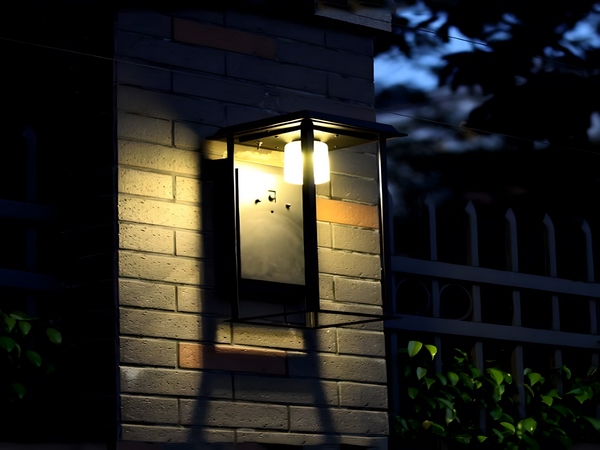
With the continuous improvement of solar cell conversion efficiency and production technology, the application of solar photovoltaic power generation is becoming increasingly widespread. In the lighting field, solar street lights are recognized and accepted as the primary application model of photovoltaic power systems in the country. However, many people consider only a limited range of factors when designing solar street lights, overlooking many important parameters. To avoid this issue, the following will introduce the parameters involved in the design of solar street lights:
1. Battery Conversion Efficiency
Different batteries correspond to different efficiencies. Currently, solar street lights generally adopt an integrated design, and the phosphate lithium batteries paired with them provide significantly higher conversion efficiencies compared to traditional lead-acid batteries, typically ranging from 92% to 95%.
2. System Rated Voltage
This refers to the battery’s rated voltage. The voltage of a single solar cell is generally between 0.4V and 0.7V. Common solar cell modules are typically made up of 36/54/60/72/96 cells in series, resulting in voltages around 18/27/30/36/48 volts.
3. Battery Capacity
The size of the battery capacity is also a key focus. If the capacity is too small, it cannot meet nighttime lighting needs; if the capacity is too large, the battery will constantly remain in a state of discharge, leading to waste and affecting its lifespan. The ratio of battery capacity (Ah) to load capacity (Ah) should ideally be above 3 to 6 times. In areas with fewer consecutive rainy days, a ratio of 3 to 4 times is sufficient; if there are many consecutive rainy days, it should be at least 5 to 6 times.

4. Rainy Day Compensation
This depends on the local climate conditions. In rainy weather, the charging efficiency of solar panels will naturally not match that of sunny days. Therefore, it is essential to ensure that the battery can store enough energy to allow the solar street light to function normally during rainy days. This also relates to the working efficiency of the solar panel.
5. LED Head Power
This refers to the power of the lamp head or the efficiency of the controller drive, which is determined based on the specific installation environment. The taller the lamp pole, the higher the power required for adequate illumination.
6. Comprehensive Loss Compensation Coefficient
This generally takes into account line loss, dust, shading, battery Coulomb efficiency, and the effects caused by temperature. When calculating related parameters, a value typically between 1 and 1.4 is used.
7. Interval of Consecutive Rainy Days
This refers to the number of sunny days between two consecutive rainy days. It is important to note that when calculating relevant parameters, the average sunshine is generally used as the basis for charging on sunny days, and actual sunshine on those days should exceed the average.
Additionally, even on rainy days, the battery still receives some charging, so when using this parameter in calculations, it is not necessary to strictly select the interval of consecutive rainy days, and it is reasonable to increase the value slightly. A ratio of 1:3 or 1:4 for the interval between rainy days is quite suitable.
8. Local Solar Radiation
This can be directly queried online by selecting the average monthly radiation at the optimal angle, requiring at least a three-month average. During installation, attention must be paid to the angle and orientation to ensure that the solar street light receives adequate sunlight and maintains charging efficiency. A position within ±20° of true south is considered ideal.
9. Solar Panel Output Power
Solar panels are generally composed of multiple solar cells in series. The capacity required depends on the total power consumed by the lighting source and wiring transmission components, as well as the local solar radiation energy.
Typically, the output power of solar panels should be at least 3 to 5 times greater than the power of the light source. In areas with abundant sunlight and short lighting times, a ratio of 3 to 4 times is adequate; in areas with poor lighting conditions and longer lighting times, a ratio of 4 to 5 times is necessary.
10. Daily Load Operating Time
Current solar street lights are designed to be intelligent, usually being brightest during the busy early evening period when they operate at 100% power, and dimmer late at night, often at 50% power. In calculations, it is important to consider the equivalent working time at full power.

11. Controller Component Charging Efficiency
Charging control methods for controllers generally include PWM and MPPT types, each with different corresponding charging efficiencies. PWM includes three charging modes: strong charge, balanced charge, and float charge, effectively addressing issues like incomplete battery charging and short battery lifespan; however, its efficiency is lower than that of MPPT.
The MPPT solar controller has three charging phases: MPPT charging, constant voltage balanced charging, and constant voltage float charging, allowing the system to charge the battery at maximum power, leading to high charging efficiency. However, the price can be several times or even dozens of times that of PWM, which should be considered based on specific needs and component parameters.
12. Controller Component Drive Efficiency
This serves as a reference for calculating the power of the lamp head and setting the current supplied to the lamp head.
The parameters related to the design of solar street lights have been shared here. In summary, the design of solar street lights must be scientific and rational. In addition to the above factors, the overall structure of the street light must also be considered, especially the calculation for wind resistance and the aesthetic integration of street lamps with urban road designs.



